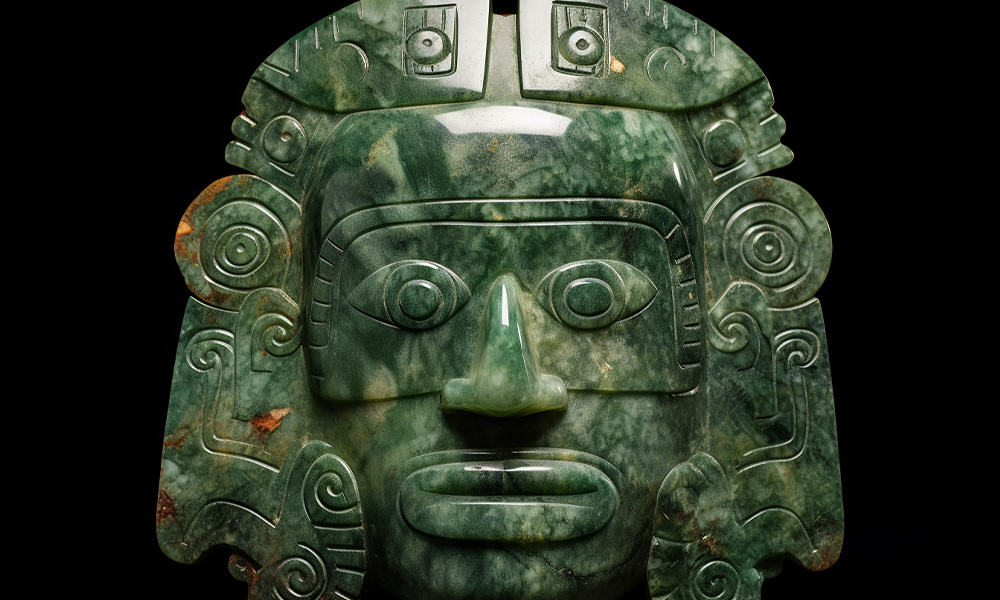My last column focused on ancient house and tomb forms, agriculture and the first chiefdoms in the several centuries before and after Christ, and how they seem to have been influenced by Mesoamerica, the lower half of Mexico, Guatemala, El Salvador and the western tip of Honduras (TT, March 27).
This time let’s focus on what else was going on in that time period in Costa Rica, and why that early northern influence gave a Mesoamerican aspect to those peoples who occupied the country some 2000 and more years ago: lapidary work in jade or similar hard, greenish stones.
It has long been one of archaeology’s enigmas: How could it be that more jade pendants, many of the highest quality, have been found in Costa Rica than in all of Mesoamerica, where the jade-carving tradition began and flourished for the first time, in the Olmec civilization of Mexico’s Gulf Coast?
The reverence and esteem for jade artifacts began in Mesoamerica, even before the first Olmec civilization. There, it took the form of pendants, tiny free-form sculptures and even masks and small vessels before 1200 B.C. The importance and sacredness of jade artifacts cannot be overestimated – it was by far the most prestigious material controlled by the high-ranking social strata, with strong religious overtones.
Among Mesoamerican cultures, especially the Maya, jade symbolized water, fertility and young green maize plants; it was seen as the holy symbol of salvation in the real world, and only the highest-ranking personages owned and displayed the best jade pendants.
This same conception of jade was held in Costa Rica, perhaps even more strongly, in the centuries around the time of Christ. Whereas Maya jades often portrayed ceremonial or mythic scenes, carved in low relief, Costa Rican jades, like Olmec examples, stressed iconic images of different birds or human shamans, most often situated above a symbolic polished axe, the tool of primary clearing of agricultural plots, to fell trees and split logs used as a wedge.
The continuity between Mesoamerican and Costa Rica jade symbolism is notable; agriculture and the control of its products was the basic underlying motif.
Most pre-Columbian jade carving in Costa Rica took place in the country’s north-west quadrant – Guanacaste-Nicoya – and also the central and northeast Caribbean watershed. The central highlands were also included, but to a somewhat lesser degree. It is interesting to note that the northwest Costa Rican jades, between about 400 to 500 B.C. and A.D. 400, were primarily rather stiff and imposing axe-gods, mostly avian and human motifs.
Some of the human effigies even seem to show curlicues that, in Mesoamerica, were always interpreted as speech scrolls – that is, the shaman or chief was depicted making a pronouncement. Further, the imported Olmec and Maya jades found in Costa Rica (mostly by looters, unfortunately) have tended to be found in that part of the country.
In the Caribbean watershed, jade carving styles and symbolism were different, frequently emphasizing openwork complex carvings with double or triple aspect symbolism. But they also produced the typical axe-god form, in many different stones.
What is Social Jade?
For several decades now, archaeologists have realized that much of the lapidary corpus known from Costa Rica around the time of Christ is not actual jade (mineralogically, only jadeite and nephrite are true jade).
In fact, the only fairly close, scientifically confirmed source of all colors of true jadeite is, so far, the MotaguaRivervalley of Guatemala.
Other similar hard green stones were used with great frequency in Costa Rica – serpentine, chalcedony, opal, quartzite and others, even including black slate, which in the tombs oxidizes to a light green and is much softer than jade.
The greenstone symbolism was key. Even though lesser stones constitute much of the Costa Rican lapidary complex, the best-carved, largest and most sophisticated examples have been shown by mineralogical analysis to be true jadeite, implying a thriving trade in crude jade or axe-shaped blanks from Mesoamerica to Costa Rica.
A still-to-be-solved enigma is the geological presence in Costa Rica’s far northwest corner – the SantaElenaPeninsula – of a suite of naturally occurring minerals that, in other parts of the world, are associated with true jadeite. At present, I am one of those archaeologists who believes (like many before me) that there was a source of jadeite in that part of Costa Rica, today either exhausted or beneath sea level. The sheer quantity of superior-quality Costa Rican jades makes this hypothesis worthy of continued investigation.
Author Dr. Snarskis.





